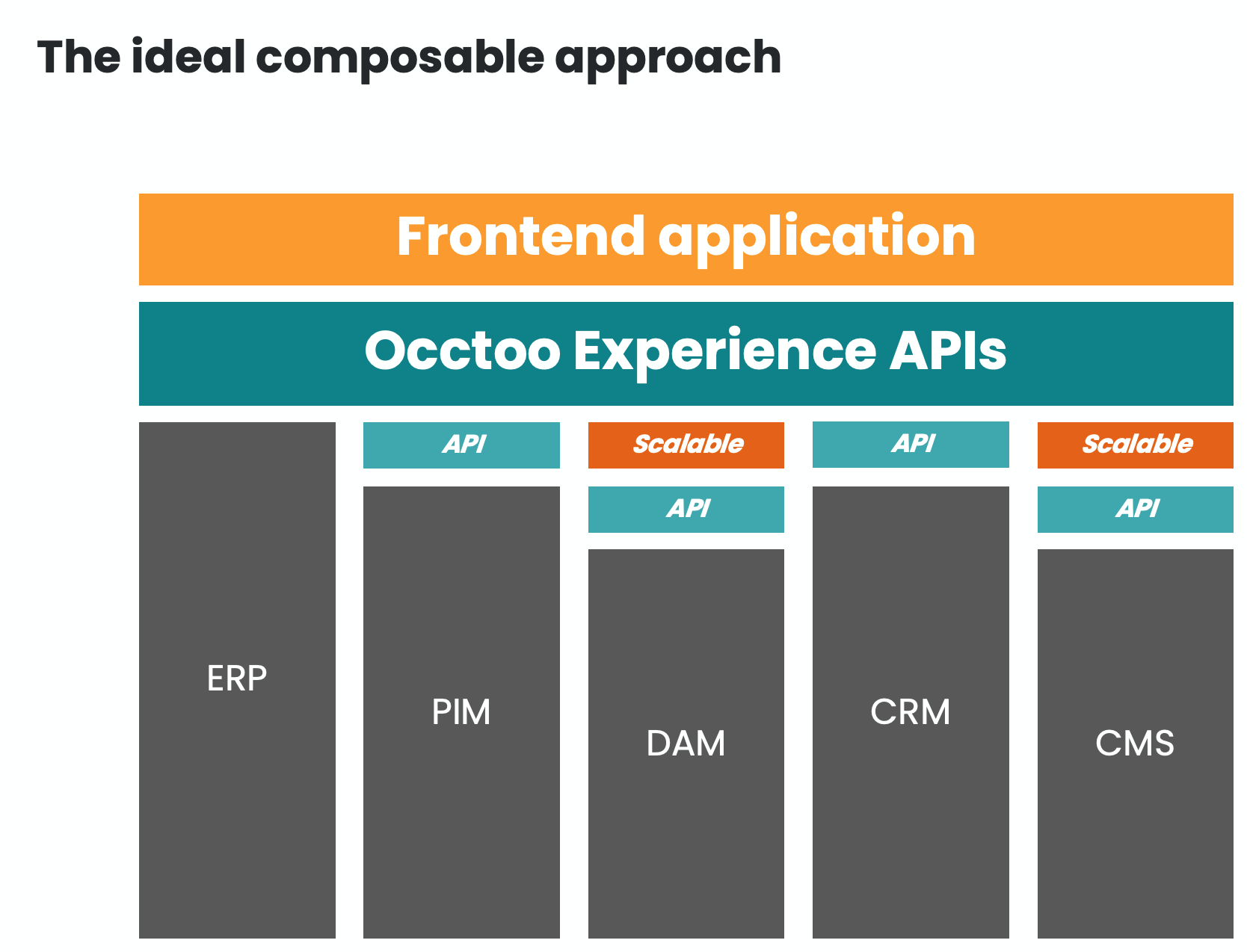Composable Architecture has been on the rise for a few years now and is a well-proven and common way of building up a technology stack for the more modern organization.
The concept of Composable Architecture is to have self-sustained systems providing support for individual functionality or sources of data while sharing all of this using various APIs. Read more in our quick guide to understanding Composable. A major benefit is that you can have dedicated, best-of-breed systems working on specific tasks or functionalities. These systems can be hosted internally or be offered in a cloud service or as a full SaaS.
Gartner® predicted that by 2023, “organizations that adopt an intelligent, composable approach will outpace their competition by 80 percent when it comes to the speed of new feature implementation”. A compelling argument that would be hard for most opportunistic companies and digital teams not to be allured by. Gartner also predicts that 60% of organizations seek composability in new application investments by 2023.
Moving to a Composable Architecture can sometimes mean complex integrations, but there is a solution to this.
While going the Composable way offers you the benefit of making all of your data highly available in various APIs and ready to be consumed by developers, it also means that you now have all your data spread out over various APIs, in different formats, and in shifting scalability for your developers to handle, interpret and combine.
The solution for many organizations is to begin a large project of unifying the data; creating data lakes and integrating all possible data into one system, one system to rule them all. Projects like these consume time and resources and very often produce a behemoth solution that is hard to maintain going forward. So how do you avoid complex integrations?
The data often comes in various formats and is modeled in different ways depending on the source system. Handing this data over to a developer means that it is up to them to try to figure out the lowest common denominator between the different sources and the receiving system; this, in turn, results in a lot of discarded and unused data that’s never used for the various digital experiences, the intent is there but it gets lost or downsized along the way.
The perfect solution to remedy these issues and make your switch to Composable smooth is the Occtoo Experience Data Platform (XDP)
Occtoo is a key component in a Composable architecture to provide a unified data layer sitting on top of your system of records. You then only need one interface to fuel the data to your frontend layer, making it a seamless experience for your customers in the frontend.
The main job of your system of records is to store and maintain all your single domain-specific data. The job of a System of Engagement (Occtoo) is to unify and activate your data bringing it to life in front of your customers using real-time APIs. With Occtoo you don't need to rip and replace the system of records that is built on legacy technology. Occtoo just sits on top of these systems, unifying all data and transforming it into lightweight and easy consumable data through real-time APIs. These previous investments become even more valuable because the data is easier for your digital teams to actually use.

Occtoo was built with a focus on on-boarding ANY type of data. It is extremely simple to push data from any kind of source into Occtoo, even stale data such as CSV files. You can do batch imports, and delta updates and have full CRUD operability. There is no model to adhere to, just push the data and take care of it in the Occtoo Studio where it is easy to convert into purpose-built and scalable APIs.
You can view Occtoo documentation here.
